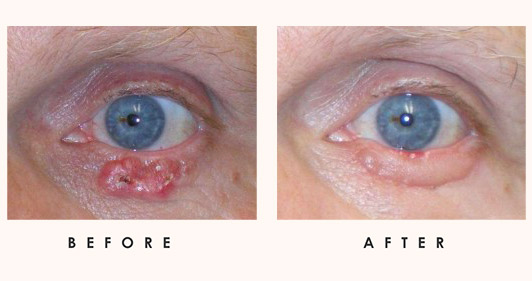Orbital and Skin Tumors
Jump To
Idaho Eyelid and Facial Plastic Surgery manages diagnosis and treatment of both orbital and skin tumors in Boise, Idaho. An orbital tumor is any tumor that occurs within the orbit of the eye is typically not visible unless the tumor starts to erode the bone. A skin tumor is a cyst or lesion which is usually visible on the face. Both orbital and skin tumors may require biopsies to discover the nature of the growth.
What Is an Orbital Tumor
The orbit is a bony housing in the skull about two inches deep that provides protection to the entire eyeball except the front surface. It is lined by the orbital bones and contains the eyeball, its muscles, blood supply, nerve supply, and fat. Tumors might develop in any of the tissues surrounding the eyeball and might also invade the orbit from the sinuses, brain, or nasal cavity. It can metastasize (spread) from other areas of the body. Orbital tumors can affect adults and children. Fortunately, most are benign.
Idaho Eyelid and Facial Plastic Surgery’s surgeons are some of the few Idaho providers who are trained to manage orbital tumors, making our Practice a top choice should patients suspect a growth within the orbit of the eye.
What Causes Orbital Tumors?
Orbital tumors develop differently in children and adults. The most common orbital tumors in adults are also blood vessel tumors, including hemangioma, lumphangioma, and arteriovenous malformation. Tumors of the nerves, fat, and surrounding sinuses occur less frequently. Metastatic tumors most often arise from the breast and prostate, while squamous and basal cell cancer can invade the orbit from surrounding skin and sinus cavities. Lymphomas are the most frequently occurring malignant orbital tumors in adults.
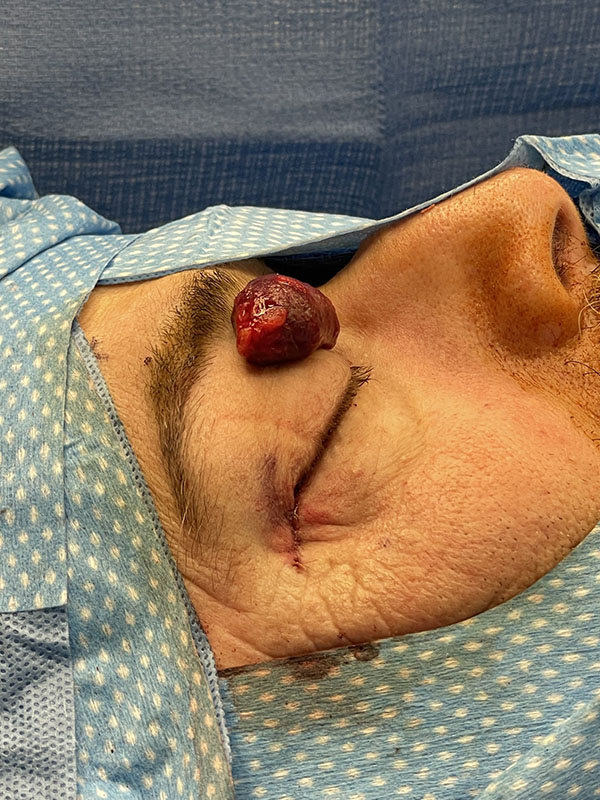
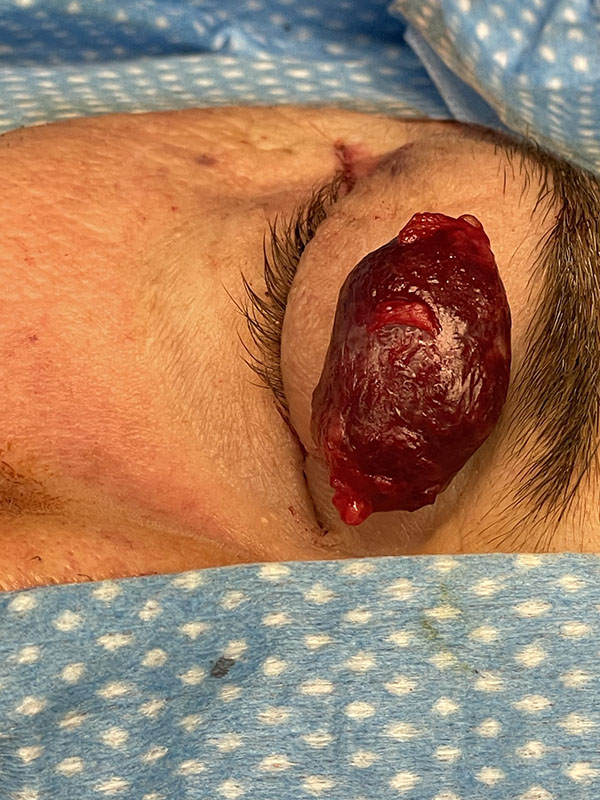
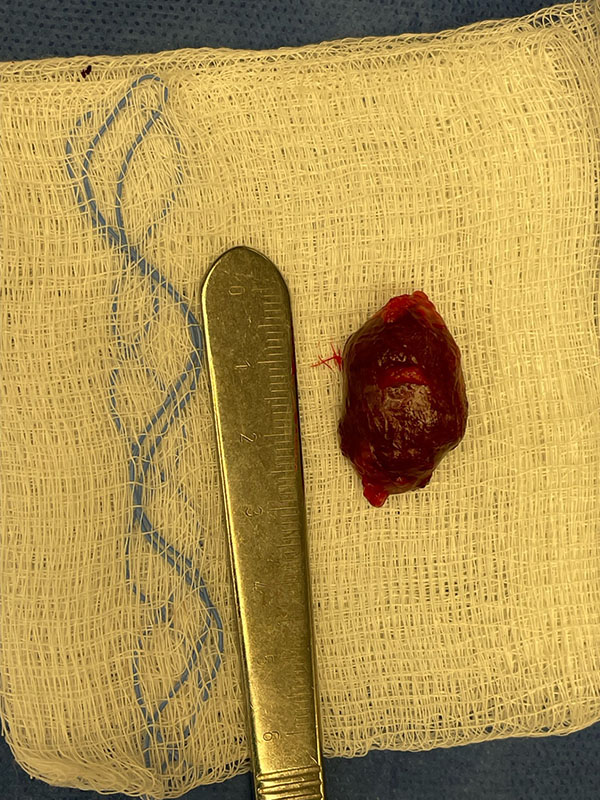
Benign Cavernous Hemangioma extracted from behind a patient’s eye
In children, orbital tumors present somewhat differently. Most childhood orbital tumors are benign but can lead to developmental abnormalities. Common orbital tumors in children are dermoids (cysts of the lining of the bone) and hemangiomas (blood vessel tumors). While malignant tumors are unusual in children, any rapidly growing mass should be cause for concern. Rhabdomyosarcoma is the most common malignant tumor affecting children, and it usually occurs between the ages of 7 and 8.
What Are the Symptoms of an Orbital Tumor?
Symptoms of an orbital tumor might include:
- protrusion of the eyeball (proptosis)
- pain
- loss of vision
- double vision
- redness
- swelling of the eyelids
- obvious mass
Prominence of the eyes is not necessarily indicative of a tumor. Inflammation can be symptomatic of other issues such as Graves’ thyroid disease. In children, parents might originally notice a droopy eyelid or slight protrusion of the eye.
How Are Tumors Diagnosed
Orbital tumors are most often diagnosed with either a CAT scan or MRI. If either of those tests look suspicious, a biopsy might be performed.
How Are Orbital Tumors Treated
Treatment of orbital tumors varies depending on the size, location, and type. Some orbital tumors require no treatment, while others are best treated medically or with the use of radiation therapy. Some might need to be totally removed by either an orbital surgeon or a neurosurgeon, depending on the particular case. After removal, additional radiation or chemotherapy might be required. Surgery has become much safer because CT scans and MRI testing can help pinpoint the location and size of the tumor. Our surgeons at Idaho Eyelid and Facial Plastic Surgery can help patients navigate this process to minimize risk and facilitate best results.
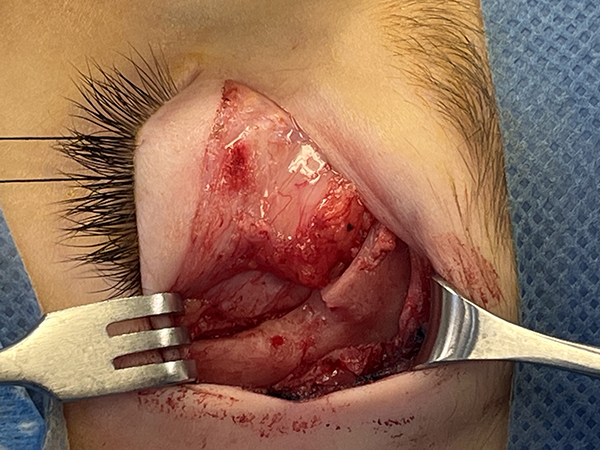
Pediatric orbital mass with bone destruction and bony rim reconstruction
What Is a Skin Tumor?
Cancer of the eyelid, like any other cancer, can cause great anxiety. Treatments are variable and depend on the type of cancer. Below we briefly examine different kinds of eyelid tumors. Broadly classified, eyelid tumors can be benign cysts, inflammatory lesions, vascular lesions, benign epithelial lesions, pre-malignant lesions, viral lesions, and malignant lesions. Idaho Eyelid and Facial Plastic Surgery has extensive experience diagnosing and treating skin tumors and can help determine the nature of these cysts/lesions both through observation and biopsy.
To determine the precise nature of tumor growth, there are a number of conditions which might lead to an investigative biopsy. These factors include:
- Skin growth that increases in size
- Mole or birthmark with irregular border and changes in size, thickness or texture
- 6 mm large lesion which appears after age 20 and is pigmented
- Sore spot that fails to heal
Benign Eyelid Lesions
Benign Cysts
- These include epidermoid cysts, dermoid cysts, sweat ductal cysts and epidermal inclusion cysts.
- As they are benign, they are easily treatable, though the treatment option for each varies.
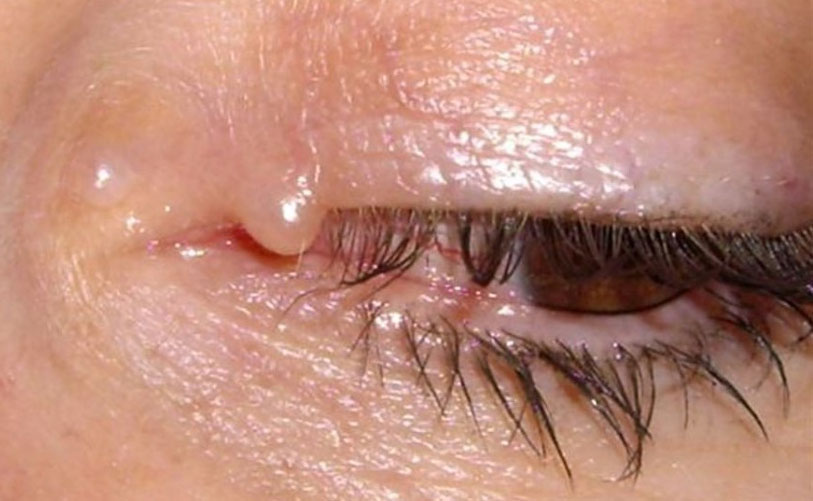
Benign Cyst
Inflammatory Lesions
- While technically inflammatory lesions are not tumors, they must be borne in mind when making a diagnosis of cancer.
- Inflammatory lesions include hordoleum (stye), chalazion and parasitic infections: styes often need antibiotics and surgical drainage, chalazion benefits from simple observation and hot compresses (if required) along with gentle massage, while parasitic infections might need anti-parasitic medication.
Vascular Lesions
- Hemangiomas are vascular lesions that can mimic eye tumors. They are subcategorized as capillary hemangiomas, cavernous hemangiomas, and lymphangiomas.
- They are often seen in infants and children. If found, they need fairly urgent treatment as they can have an impact on vision and can lead to blindness.
- Treatments include steroids (administered as ointment or injection), laser photocoagulation and surgical excision.
Benign Epithelial Lesions
- Benign epithelial lesions include squamous papillomas, seborrhoeic keratosis, inverted follicular keratosis and keratoacanthoma.
- Squamous papillomas appear round or pedunculated and have a smooth surface. They can be removed surgically or in some cases interferon might be used. Interferons are a group of signaling proteins made and released by host cells in response to the presence of several viruses. In a typical scenario, a virus-infected cell will release interferons causing nearby cells to heighten their anti-viral defenses.
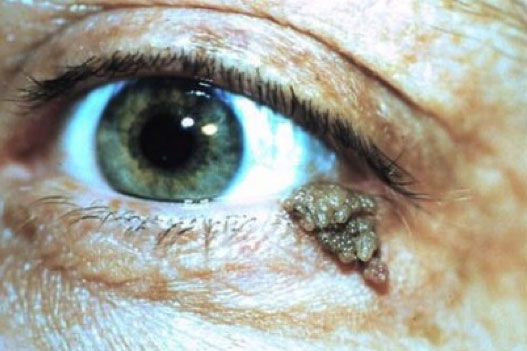
Squamous Papilloma - Seborrhoeic keratosis is often monitored for a change in shape or size before any treatment is considered. Biopsies can confirm their benign nature.
Pre-malignant Lesions
- A number of different eyelid lesions might become cancerous. They include actinic keratosis, leukoplakia, xeroderma pigmentosum and radiation dermatosis.
- Actinic keratosis occurs in sun-exposed areas and appears like a white, scaly lesion. Excision biopsy aids diagnosis.
Viral Lesions
- Common viral lesions include molluscum contagiosum, verruca vulgaris, herpes simplex and herpes zoster.
- Molluscum contagiosum is seen in individuals with low immunity, and can cause conjunctivitis. They are treated with cryotherapy or excision. Herpes simplex and zoster are treated with antiviral agents.
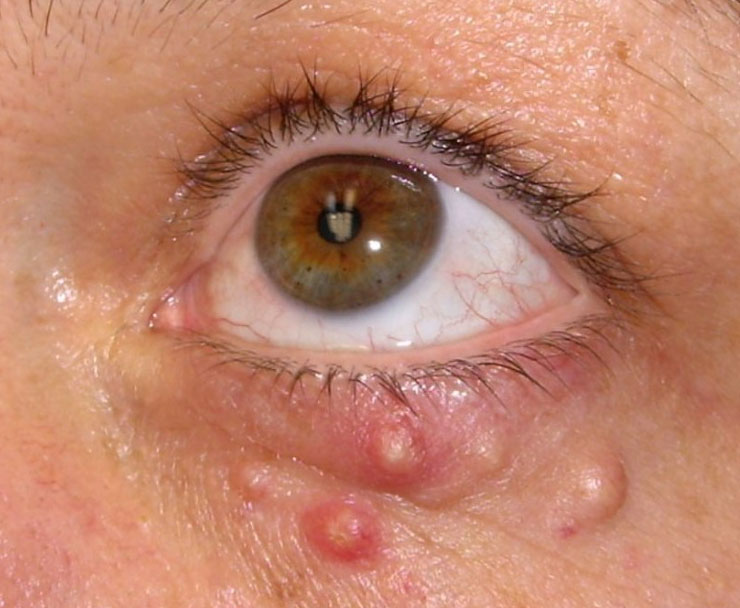
Ocular Molluscum Contagiosum
Malignant Eyelid Lesions
- These are the cancerous lesions, and include basal cell carcinoma, squamous cell carcinoma, malignant melanoma and sebaceous gland carcinoma.
- Basal cell carcinoma is the most common eyelid malignancy, and occurs as a small module at the inner aspect of the eye (medial canthus). They are locally invasive and require surgical excision.
- Squamous cell carcinoma is not as common, and appears red and scaly with an ulcer in the center. It is prone to distant spread so must be excised as soon as possible.
- Sebaceous carcinoma is seen in elderly population, and can spread to lymph nodes and distant organs. Radical surgery is often needed.
- Melanomas are rare and often require excision.
Other Eyelid Lesions
These include xanthelasma, nevi and caruncular tumors. Most are benign and require simple treatments. Xanthalesma is associated with high cholesterol levels in the blood. Nevi tumors need excision if they change size or shape.


